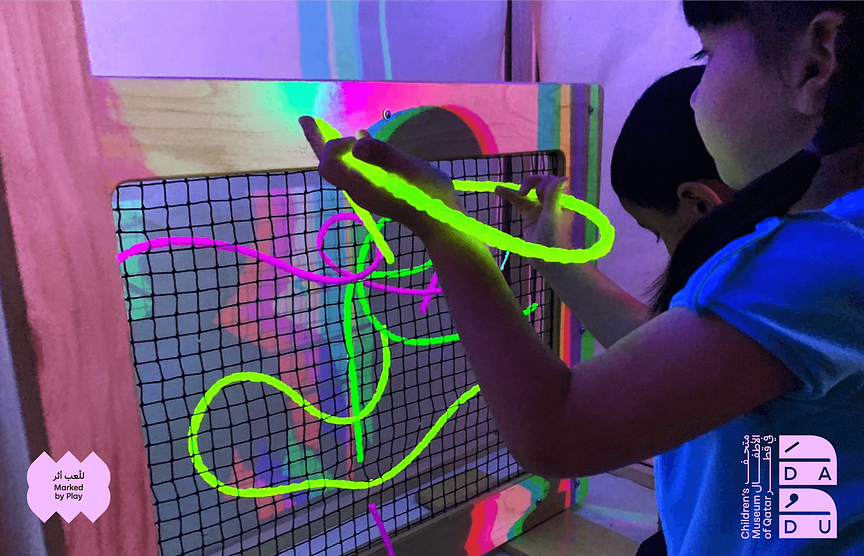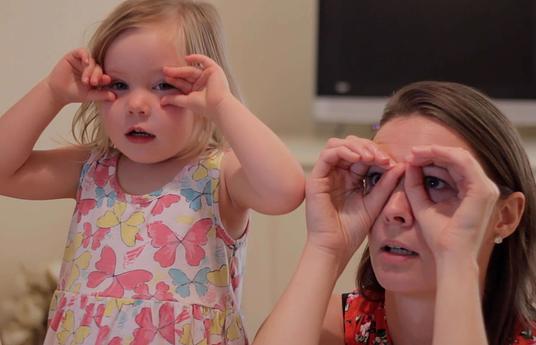What is the problem we are addressing?
Dadu: The Children's Museum of Qatar identified a gap for play-based learning opportunities within the formal education sector in Qatar.
In 2017, WISE (World Innovation Summit for Education) published a report exploring key international developments in early childhood education (ECE). This led to a subsequent policy brief entitled "Early Childhood Education in Qatar: A Snapshot," which outlined challenges in Qatar related to the implementation of a play-based curriculum, the training and capacity of the ECE workforce and the development of community engagement and support. The brief recommends that "play should be integrated into the curriculum in such a way that enables students to enjoy learning and develop critical cognitive and social skills" (Al-Khelaifi et al., 2017: 7) and that professional development programmes "must include developing teachers ongoing reflective inquiry skills" (Al-Khelaifi et al., 2017: 8).
The team at Dadu has taken this brief to heart and responded to the challenge of supporting inquiry-based learning by championing learning-through-play, open-ended learning and child-led learning to schools in Qatar through its Museum in Residence (MIR) programme.
What is our solution?
As part of the programme, Dadu creates an immersive environment with playful learning opportunities to explore different concepts. The installations are generally open-ended, have multiple learning outcomes and draws on contemporary art practice to create a space that generates intrigue, encouraging whole-body, emotional and poetic engagement.
The MIR programme draws on pedagogies such as Montessori and Reggio Emilia that recognise that children are born curious and competent and are in a constant state of active exploration of their environment.
The MIR is sensitive to each host school's needs and constraints. We start by proposing a theme related to the museum’s research question but giving room for teachers of the host school to participate in scoping out the content. Next, equipment the school already has and how this can be used is investigated, and we combine these with new resources where necessary. Re-imagining existing resources links to one of the museum's core values – 'Sustainability'.
One of the principles of Dadu's approach is to support children’s caregivers to in turn support the children. This is intrinsic to the way the MIR is rolled out. Each residency is accompanied by teacher professional development sessions, ideally to first shape and design the installation, and then to introduce the installation, equipment, possibilities, and run-through learning-through-play philosophy and facilitation approaches.
An overview of our impact
The programme has positively impacted our partner institution’s teaching practices and student’s learning.
For the teachers, the introduction of learning-through-play as a pedagogical approach was a new and innovative way to teach the curriculum. We introduced the pedagogical concepts underpinning the installation through our Teacher professional development (PD) sessions. During the PD, we demonstrated the equipment and introduced the activities and discussed how this student-led approach could enhance their teaching. We encouraged teachers to play and explore the space to see first-hand the learning opportunities. When conducting our evaluation with the teachers, all of the schools we worked with requested another MIR installation, highlighting that they saw value in this approach to teaching.
The MIR programme also provided a new and fresh approach to learning for the students, promoting inquiry-based learning and advocating for students to take the lead. From our sessions and feedback from teachers, students were excited and eager to explore the space asking for more time in the room. This level of enthusiasm and eagerness to learn stresses the significance of a play-based and student-led environment within the formal education sector.
Examples of implementation
- Nosaiba Bint Kaab Girls Kindergarten School is a government school that follows Qatar’s Ministry of Education Curriculum Standards. The MIR at this school focused on light and shadow, where we set up stations for students to explore these concepts. We worked with a total of six kindergarten classes. In their curriculum, the children learn about light and shadow and the difference between natural and artificial light sources in a didactic way. Our approach of setting up exploration settings was new to both students and teachers. Although hesitant at first, the teachers quickly embraced this approach; one teacher even noted: “It’s different, interactive; we don’t have a lot of this. We need this for our students.”
- Academyati is an independent school in Qatar. Unlike the previous example, this school advocates for children’s agency and implements play as a mode of learning. Therefore, our aim with this MIR was to address a gap in their curriculum. When talking to staff at the school, we proposed the theme of mindfulness, a theme that Dadu is interested in investigating attitudes and observing children’s play and engagement in ‘mindfulness interventions’. In this MIR, different installations explore various mindful practices, such as recognising emotions, breathing exercises, and mandala making.
What are our future goals?
Our first goal, and where we feel we can make the most significant contribution, is in supporting teachers’ professional development. We aim to build teachers confidence in the validity of learning-through-play as a method for teaching the curriculum and implementing child-led and open-ended learning approaches as part of their teaching methodology. We hope that our short-term residency will inspire educators to embrace museums as part of their teaching and seek out museum visits where they can facilitate the approaches of learning-through-play and child-led learning during these visits.
A second aspiration of this project is for educators to take the principles and foundation we bring into the school to create their own installations. We hope that schools will embed a permanent MIR in their buildings, where teachers can adapt the content based on curriculum needs. We hope that MIR alumni schools are able to reach a point where they are confident in their MIR and are able to share the experience with other schools by either transporting the residency or sharing ideas.
How can someone else implement it? What do they need?
The MIR is developed in collaboration with schools and is responsive to the needs and constraints of its hosts. Loosely, it is a collection of resources that the Dadu team draws upon to transform spaces in schools into immersive and open-ended play environments. Installations are engineered to draw flexibly on a pool of evolving parts sourced from places with consistent stock (e.g. Ikea). This has had the added advantage of allowing teachers to replicate the installations in their classrooms - a legacy after the MIR departs.
Schools that are interested in implementing a MIR will have access to Dadu's resource list. The MIR kit of parts, to some extent, can be used interchangeably to create different experiences. But in time, the team has developed a core menu of installations that have worked reliably, been successful in engaging the students and received good feedback from teachers. Alternatively, schools can design a unique MIR experience that draws upon concepts of play-based, open-ended and student-led learning.


